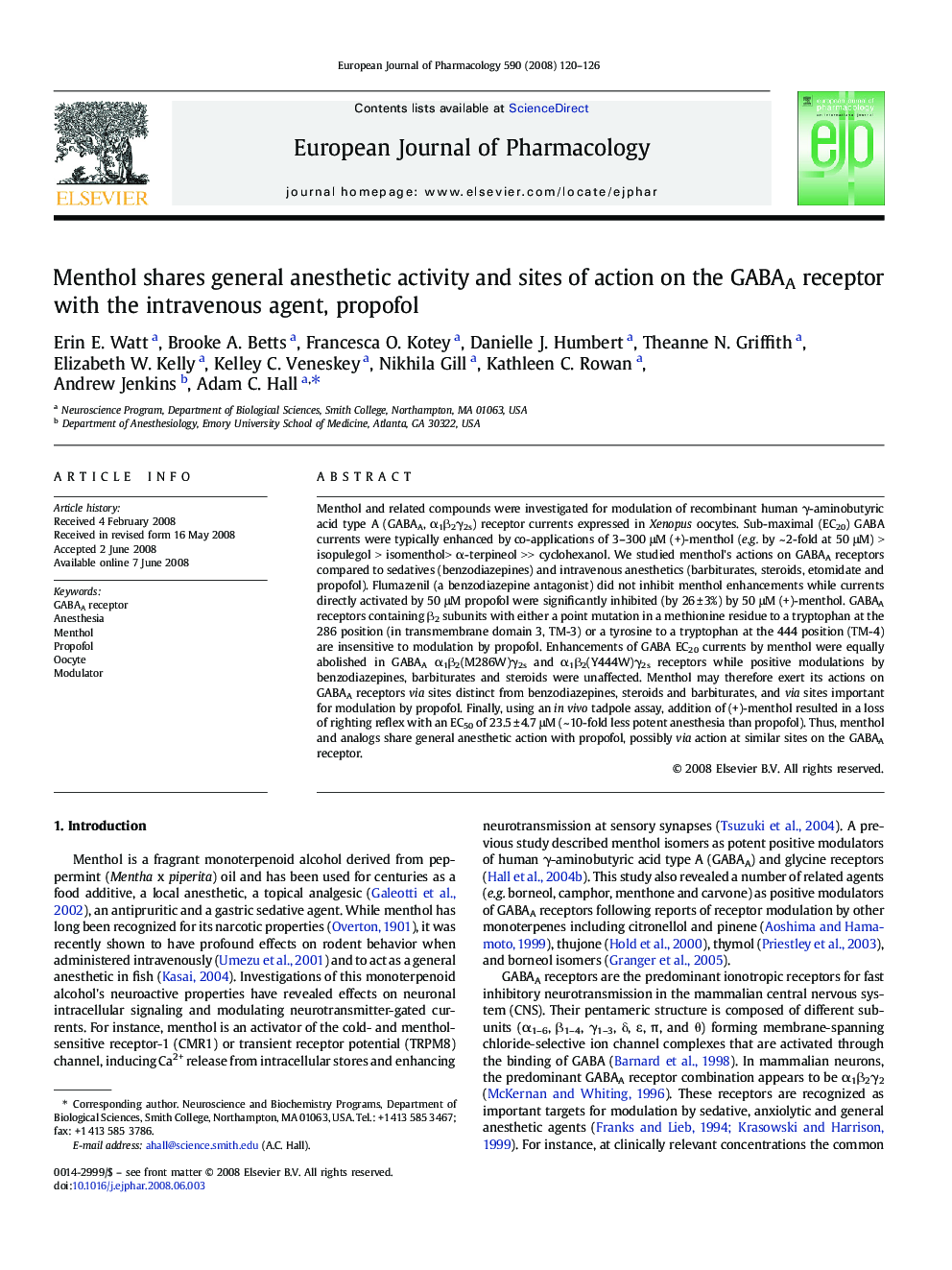| Article ID | Journal | Published Year | Pages | File Type |
|---|---|---|---|---|
| 2534934 | European Journal of Pharmacology | 2008 | 7 Pages |
Menthol and related compounds were investigated for modulation of recombinant human γ-aminobutyric acid type A (GABAA, α1β2γ2s) receptor currents expressed in Xenopus oocytes. Sub-maximal (EC20) GABA currents were typically enhanced by co-applications of 3–300 μM (+)-menthol (e.g. by ~ 2-fold at 50 μM) > isopulegol > isomenthol> α-terpineol >> cyclohexanol. We studied menthol's actions on GABAA receptors compared to sedatives (benzodiazepines) and intravenous anesthetics (barbiturates, steroids, etomidate and propofol). Flumazenil (a benzodiazepine antagonist) did not inhibit menthol enhancements while currents directly activated by 50 μM propofol were significantly inhibited (by 26 ± 3%) by 50 μM (+)-menthol. GABAA receptors containing β2 subunits with either a point mutation in a methionine residue to a tryptophan at the 286 position (in transmembrane domain 3, TM-3) or a tyrosine to a tryptophan at the 444 position (TM-4) are insensitive to modulation by propofol. Enhancements of GABA EC20 currents by menthol were equally abolished in GABAA α1β2(M286W)γ2s and α1β2(Y444W)γ2s receptors while positive modulations by benzodiazepines, barbiturates and steroids were unaffected. Menthol may therefore exert its actions on GABAA receptors via sites distinct from benzodiazepines, steroids and barbiturates, and via sites important for modulation by propofol. Finally, using an in vivo tadpole assay, addition of (+)-menthol resulted in a loss of righting reflex with an EC50 of 23.5 ± 4.7 μM (~ 10-fold less potent anesthesia than propofol). Thus, menthol and analogs share general anesthetic action with propofol, possibly via action at similar sites on the GABAA receptor.
